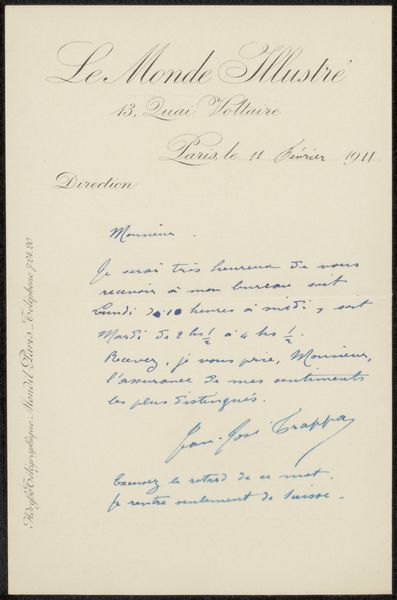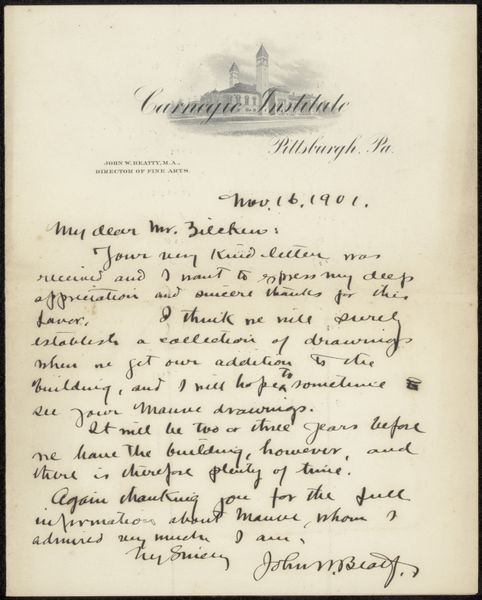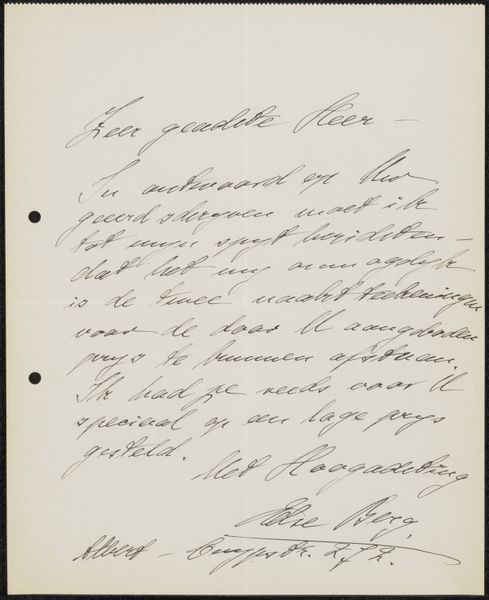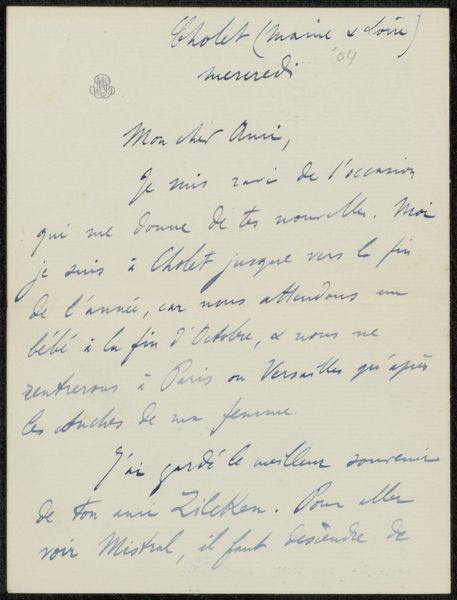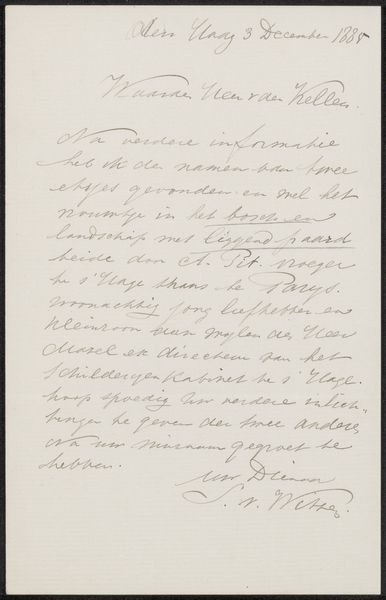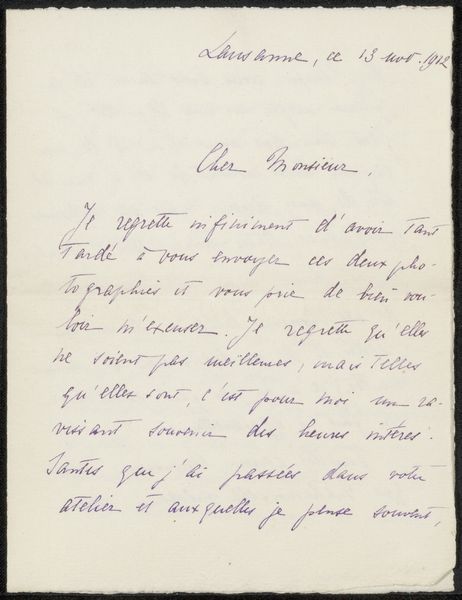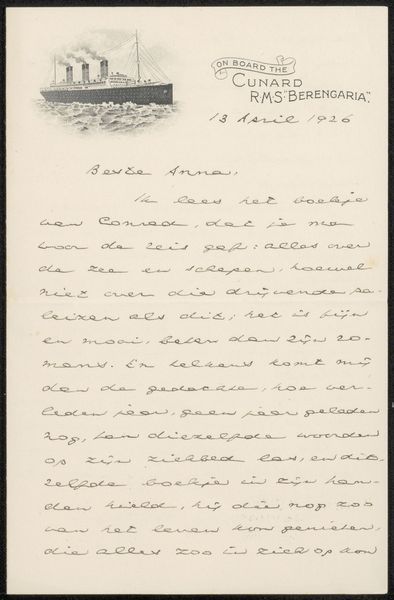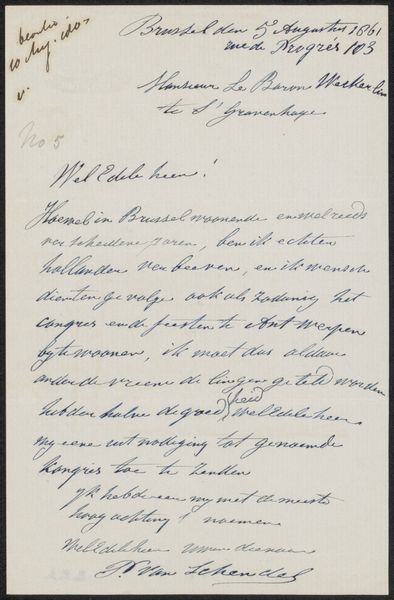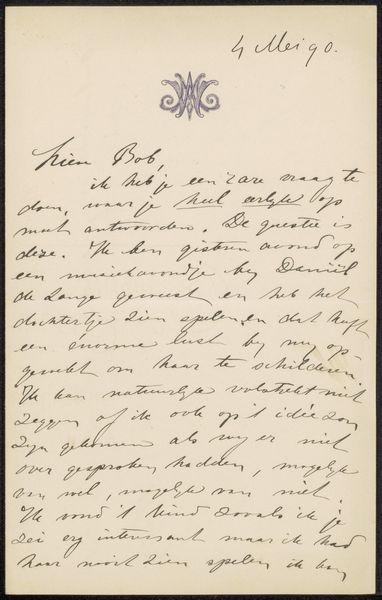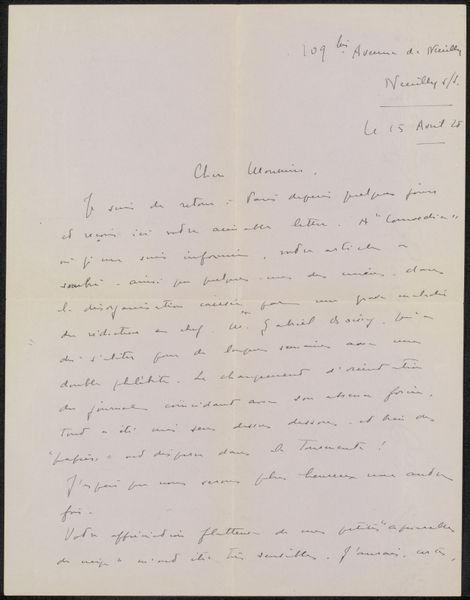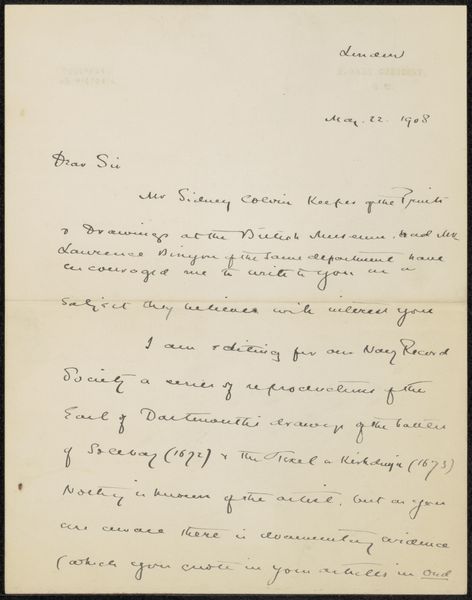
drawing, paper, ink
#
drawing
#
hand-lettering
#
ink paper printed
#
hand drawn type
#
hand lettering
#
paper
#
personal sketchbook
#
ink
#
hand-drawn typeface
#
fading type
#
ink colored
#
sketchbook drawing
#
sketchbook art
#
calligraphy
Copyright: Rijks Museum: Open Domain
Curator: So, this piece is called "Brief aan Philip Zilcken," potentially from 1929, by Carl Henny. It's primarily ink on paper, appearing as a handwritten letter. I’m immediately struck by its intimacy – a direct connection to the artist through their hand. How do you interpret the work? Editor: Well, at first glance, it looks like a personal letter. The script seems very deliberate, like the artist was really considering each word, each stroke of the pen. What stands out to me is that it's presented as a piece of art, elevating what would normally be ephemeral. Curator: Precisely. Look at the letterhead - Carlton Hotel, Lyon. What does that choice of stationery signal? We can consider the cost and labor in producing stationery like this, reflecting on the economic realities of Henny and his recipient. Does the material production of this letter and its very circulation change its potential for meaning? Editor: So, the choice of using luxury stationery is important? Does it say something about Henny's relationship to Zilcken, or perhaps about his own aspirations? It makes me wonder about the content of the letter itself – if it justifies the paper it's written on. Curator: Absolutely. The content also becomes crucial. He is trying to spark some connection or relationship with the French Language and the people that produce the language. Also, note how the fading type emphasizes temporality – the transient nature of communication, the decay of materials. This piece really asks us to confront the physicality of art-making, doesn't it? What happens when we display what is meant to be disposable? Editor: I see what you mean. Presenting the letter elevates it beyond a simple message and highlights its materiality and production in relation to language. Curator: Indeed. Considering the social context in which this piece was made gives the viewer a more complete and holistic understanding. It moves us to see everyday communication, with certain status conveyed through the production of language, material, and objecthood. Editor: That's a really helpful way to frame it; the emphasis on labor and material makes me look at everyday objects in a whole new way. Curator: Wonderful. It’s about seeing the world through a lens of production and its complex realities!
Comments
No comments
Be the first to comment and join the conversation on the ultimate creative platform.

